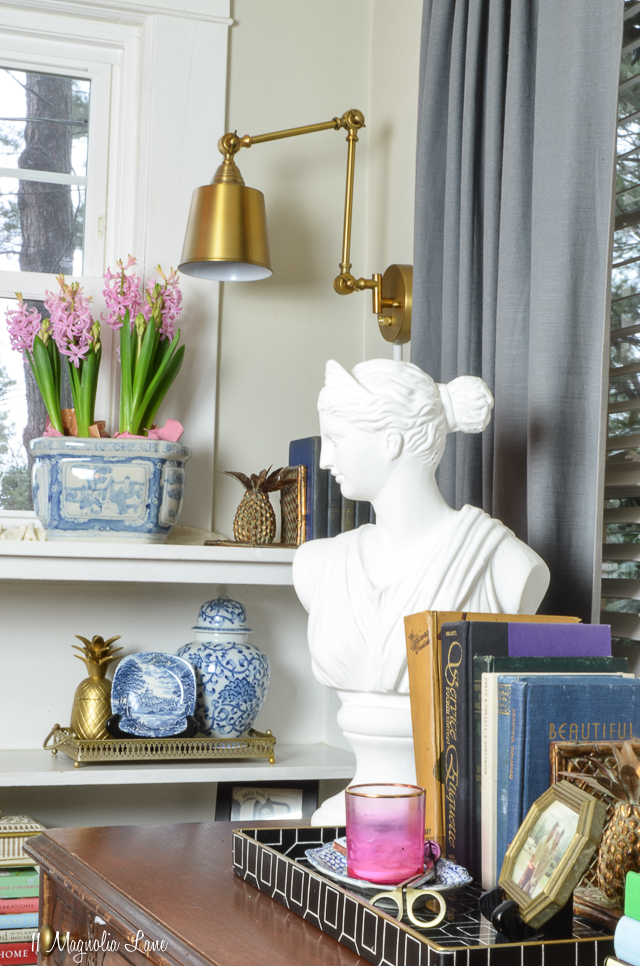A few months ago, I purchased and installed a pair of brass sconces in the MCC House. Because we’re renting and I had no desire to add electrical boxes in our old plaster walls, I opted for plug-in sconces instead of hardwired ones. Today I thought I’d show you a few photos of where I used them in the house and give you an honest review of what I think of them.

Let me give you the bottom line first: I do really like them and I would buy them again (mine are from Amazon and the exact ones I ordered are just below). They are not perfect, though, because you get what you pay for and mine were very reasonably priced (about $120 for two). I’ll also give you guys a few links to others that are higher quality (and higher priced!) at the end of this post.

So obviously I put one of the sconces in our living room, where I now have four lamps and one overhead light. We have lots of mature trees on our lot, which is great except when you’re craving sunshine during the winter. I actually considered putting both sconces on either side of our couch, but I love my vintage pharmacy floor lamp (see it in this post) and like it right where it is.
The other one is in my kitchen, over the sink:

Another place to put a matching pair of sconces is on either side of a bed, or even a sideboard or buffet in a dining room. They’re also called “library sconces” for a reason–they are perfect mounted on library bookshelves. Since these will go with us when we move, it will be interesting to see where they wind up in our next house.

If you look closely at the top and the left side of the window frame, you can see the tubular conduit that I used to hide the cord. It’s self stick and be cut and painted so it blends in even more (I’ll also link to it below).
You can see the section I used in the living room in this picture; I haven’t painted it yet but it’s still not very obtrusive.

The conduit makes all the difference; if you’re not going to hardwire your sconces then you really must use it. It’s only about $5 for a 5′ length so it’s money well spent to finish your project!

These sconces operate via a knob on the base, you can see it in the above photo. In the kitchen, obviously I don’t want to have to climb up on a step stool to turn my lamp on and off, so I just use the plug. Here’s how I hid the rest of the cord under the cabinet:

It’s not perfect, but it’s good enough, and you really don’t notice it unless you’re looking for it. I could have run the conduit all the way down to the outlet but I decided that for a temporary installation this was good enough.

So, obviously I’m pleased with them, but there are a couple of things I want to mention. They’re decent quality but not great, so that means they’re lightweight. That’s good for hanging them on the wall, but don’t be expecting real brass. I think they’re actually painted. You also have to use the correct wattage for the bulb or the shade gets hot, but isn’t that common sense? Last, I did read in the reviews that some people got sconces that were slightly crooked (the arm didn’t line up well with the base, for example). So just be prepared that you might need to exchange them if you get ones that aren’t perfect, although hopefully they’ve improved their quality control since those reviews were written!

As promised, here are of the others I considered. Some are hardwired and some are plug-in, but you can easily add a plug to a hardwired sconce by using a lamp cord kit. I’ve done it before and it’s really simple.

I hope that’s helpful! Let me know if you have any specific questions, and thanks for stopping by.











Leave a Reply